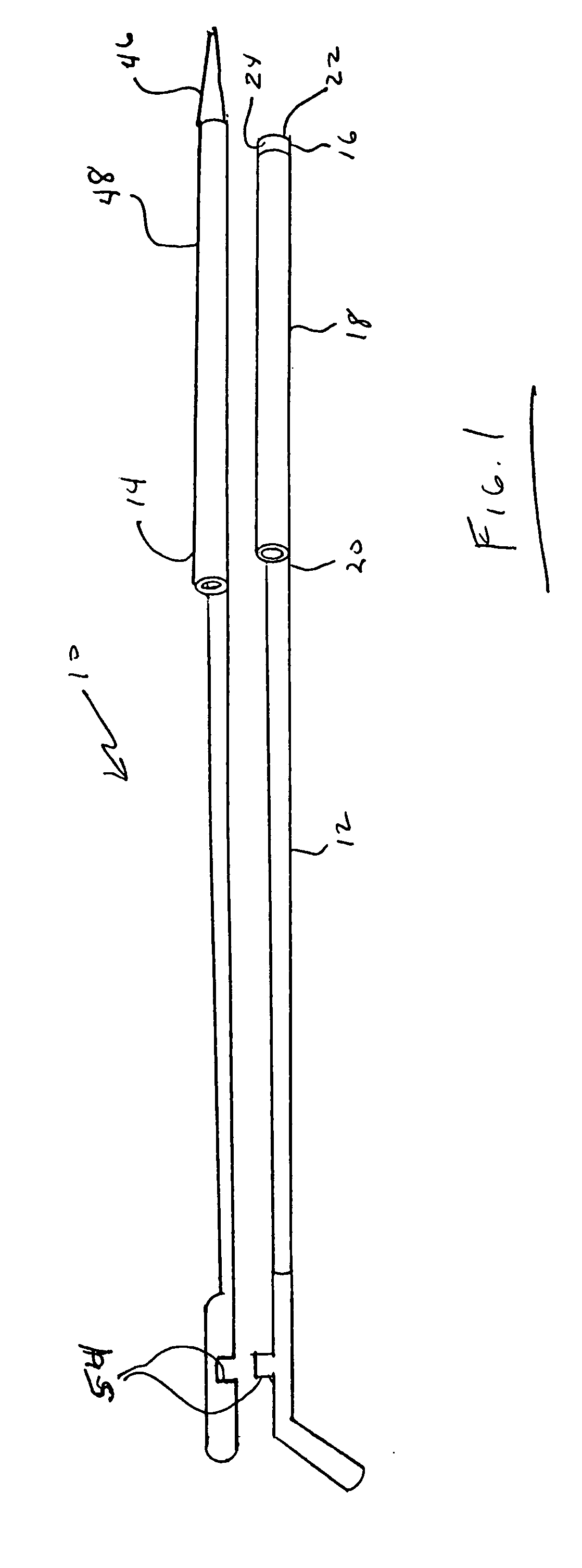Coaxial guide catheter for interventional cardiology procedures
a catheter and guide catheter technology, applied in the direction of catheters, multi-lumen catheters, other medical devices, etc., can solve the problems of obstructing the lumen, dramatically narrowing the lumen of the artery, and difficult or impossible for the interventional cardiologist to treat certain forms of coronary artery diseas
- Summary
- Abstract
- Description
- Claims
- Application Information
AI Technical Summary
Benefits of technology
Problems solved by technology
Method used
Image
Examples
Embodiment Construction
[0050] Referring to FIGS. 1 and 2, coaxial guide catheter assembly 10 of the present invention generally includes coaxial guide catheter 12 and tapered inner catheter 14.
[0051] Coaxial guide catheter 12 generally includes tip portion 16, reinforced portion 18, and rigid portion 20. The overall length of the coaxial guide catheter typically can be approximately 125 cm. This length should not be considered limiting.
[0052] Tip portion 16 generally includes bump tip 22 and marker band 24. Bump tip 22 includes taper 26. Bump tip 24 is relatively flexible and may be formed, for example, from 4033 Pebax®. Bump tip 22 may be yellow or another high visibility color for ease of handling.
[0053] Marker band 24 is formed of a radiopaque material such as platinum / iridium alloy usually at a 90 / 10 ratio. Marker band 24 may be sandwiched between an outer Pebax® material 28 and a PTFE liner 30. Outer Pebax® material 28 in this location may be formed of 5533 Pebax, for example.
[0054] Reinforced po...
PUM
 Login to View More
Login to View More Abstract
Description
Claims
Application Information
 Login to View More
Login to View More - R&D
- Intellectual Property
- Life Sciences
- Materials
- Tech Scout
- Unparalleled Data Quality
- Higher Quality Content
- 60% Fewer Hallucinations
Browse by: Latest US Patents, China's latest patents, Technical Efficacy Thesaurus, Application Domain, Technology Topic, Popular Technical Reports.
© 2025 PatSnap. All rights reserved.Legal|Privacy policy|Modern Slavery Act Transparency Statement|Sitemap|About US| Contact US: help@patsnap.com



